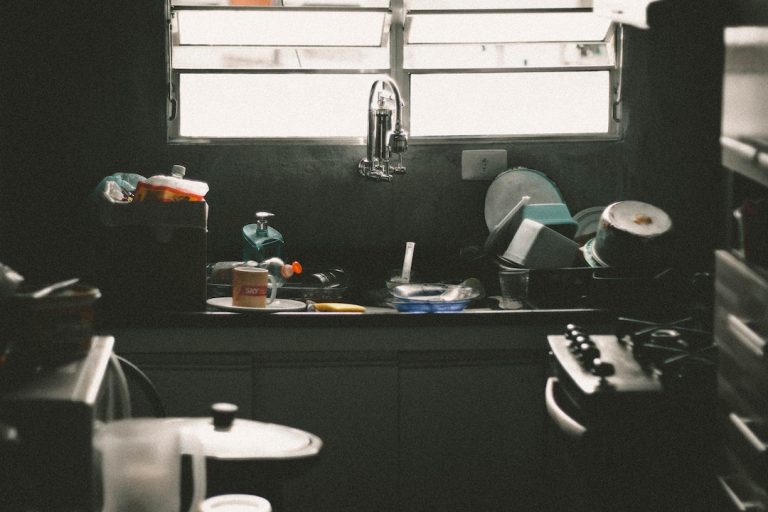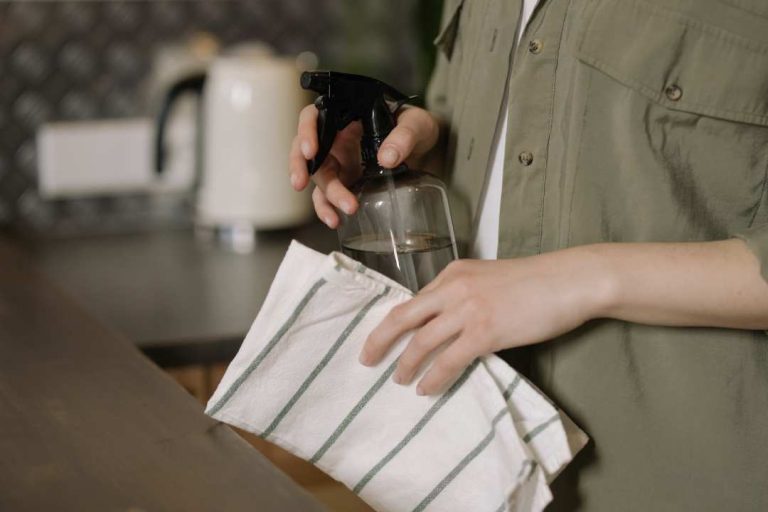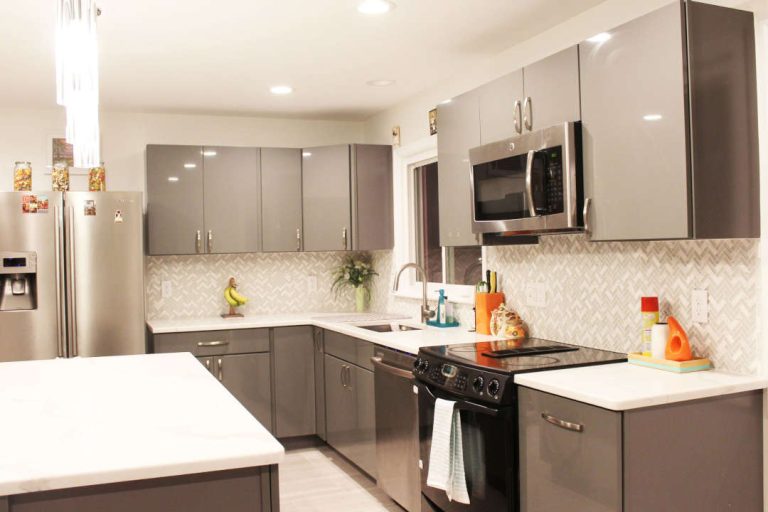Welcome to the ultimate guide on how to maintain a clean and hygienic fully fitted kitchen! In this section, we will explore the most effective methods for keeping your kitchen sparkling clean. Whether you’re a novice in kitchen cleaning or a seasoned pro, we’ve got you covered. From daily routines to deep cleaning strategies, we’ll provide you with all the best ways to ensure that your fully fitted kitchen remains spotless.
Establish a Daily Cleaning Routine
Keeping your fully fitted kitchen clean requires developing a daily cleaning routine. The following tips will help you create a manageable routine that fits your schedule:
- Wipe down countertops: Clean your countertops daily with a disinfectant cleaner to remove any crumbs or spills. This will also prevent bacteria growth and the spread of germs.
- Wash dishes promptly: Wash dishes as soon as possible after use to avoid a pileup. This will prevent food from sticking to the plates and make your kitchen look tidier.
- Sweep or vacuum the floors: Sweep or vacuum your kitchen floors daily to remove any debris and prevent the accumulation of dirt and dust.
- Empty the trash: Take out the trash daily to prevent the buildup of unpleasant odors and to keep your kitchen smelling fresh.
- Clean as you cook: Clean up spills and wipe down surfaces as you cook to prevent them from sticking and becoming harder to clean later.
By incorporating these tasks into your daily routine, you will make it easier to keep your fully fitted kitchen clean and hygienic.
Pay Attention to High-Traffic Areas
When it comes to keeping your fully fitted kitchen clean, high-traffic areas require special attention. These frequently used surfaces are more prone to dirt, grease, and grime buildup, making them more challenging to clean.
Tip: To avoid excessive cleaning, try to wipe these surfaces regularly to prevent buildup. Use a clean, damp cloth or sponge and a suitable cleaning product to remove any grime or grease.
“One of the most common mistakes people make when cleaning their kitchen is neglecting high-traffic areas. Don’t forget to clean your stovetop, sink, and refrigerator handle, especially after preparing meals or handling raw food.”
Tip: Some high-traffic areas, such as the stovetop, may require more thorough cleaning. Use a degreaser or a specialized cleaner to remove stubborn buildup. For stainless steel surfaces, use a microfiber cloth and hot soapy water to avoid scratching the surface.
Tip: Don’t forget to clean your small kitchen appliances, such as the microwave, toaster, and blender. These appliances can accumulate food residue that can attract pests or cause unpleasant odors.
Deep Clean Your Kitchen Regularly
Even with a daily cleaning routine, it’s important to schedule regular deep cleaning sessions for your fully fitted kitchen. Deep cleaning involves a thorough cleaning of all the surfaces, appliances, and components in your kitchen. It ensures that any hidden dirt or grime is removed, leaving your kitchen sparkling clean.
How often should you deep clean your kitchen?
The frequency of deep cleaning your fully fitted kitchen will depend on factors such as the size of your family, the amount of cooking you do, and the level of foot traffic in your kitchen. As a general rule, a deep clean should be done at least every three months.
Steps for Deep Cleaning Your Kitchen
- Start by removing all the items from your countertops, cabinets, and drawers. Sort through the items and discard or donate any you no longer need. This will make the cleaning process easier and faster.
- Clean the cabinets and drawers with warm soapy water and a microfiber cloth. For stubborn stains or grime, use a mixture of baking soda and water.
- Clean your appliances both inside and outside. For your oven and microwave, use a mixture of baking soda, water, and vinegar to remove any stubborn stains or grease.
- For your fridge and freezer, remove all the food items and place them in a cooler. Clean the interior with warm soapy water and a microfiber cloth. Don’t forget to clean the shelves and drawers. Once done, replace the food items.
- Clean your kitchen sink with warm soapy water, scrubbing it with a non-abrasive sponge. For stubborn stains or grease, use a mixture of baking soda and water, or a specialized sink cleaner.
- Sweep or vacuum your kitchen floor to remove dirt and debris. Mop the floor with warm soapy water, focusing on areas that are heavily trafficked.
Tip: As you clean each component of your fully fitted kitchen, inspect it for any damage or wear and tear. Addressing issues promptly will help prolong the lifespan of your kitchen appliances and components.
Deep cleaning your fully fitted kitchen may take several hours, but with our step-by-step guide, the process should be smooth and stress-free. A clean kitchen promotes hygiene and reduces the risk of foodborne illnesses. Plus, it’s always a joy to cook in a sparkling-clean kitchen!
Organize and Declutter Your Kitchen
A cluttered kitchen not only looks messy but can also make it harder to keep clean. To maintain a hygienic fully fitted kitchen, it’s crucial to organize and declutter regularly. Here are some tips to help you get started:
Create a place for everything:
The first step to decluttering your kitchen is to create a designated storage space for everything. Go through your cabinets and drawers and assign a specific area for each item. This way, you can easily find what you need and put it back in its proper place when you’re done.
Minimize countertop clutter:
Countertops are prime real estate in a fully fitted kitchen, and it’s essential to keep them as clear as possible. Identify items that are taking up unnecessary space and find a new home for them in a drawer or cabinet.
Invest in storage solutions:
If you’re short on a cabinet or drawer space, invest in storage solutions that can maximize your kitchen’s storage capacity. There are a variety of options available, from cabinet organizers to hanging shelves and magnetic strips for knives.
Donate or toss unused items:
It’s easy for kitchen items to accumulate over time, but not all of them are necessary. Go through your cabinets and drawers and identify items you no longer use, need, or want. Consider donating or selling them to free up space and reduce clutter.
“A tidy kitchen is a sign of a clean and healthy kitchen.”
Clean as you go:
One of the best ways to keep your fully fitted kitchen clean and organized is to clean as you go. Don’t wait until the end of the day to clean up spills or put away dishes. Take care of messes as soon as they happen to help keep your kitchen looking neat and tidy.
By following these tips, you can create a more organized and clutter-free fully fitted kitchen. A tidy kitchen is a sign of a clean and healthy kitchen, so take the time to maintain your space regularly.
Maintain Proper Ventilation
A fully fitted kitchen with inadequate ventilation can quickly become stuffy and unpleasant. Proper ventilation not only ensures a comfortable environment but also helps to eliminate cooking odors and maintain optimal indoor air quality. In this section, we will explore some practical tips for maintaining proper ventilation in your fully fitted-kitchen.
Choose the Right Type of Ventilation System
There are several types of kitchen ventilation systems available, including range hoods, downdraft vents, and recirculating vents. It’s important to choose the right type of ventilation system for your kitchen based on factors such as size, layout, and cooking habits. A range hood is a popular choice for most kitchens, as it effectively removes heat, steam, and cooking odors from the air.
Clean Your Ventilation System Regularly
Regular cleaning of your kitchen ventilation system is essential to ensure that it functions properly. Over time, dust, grease, and other debris can accumulate in the system, reducing its efficiency and increasing the risk of fire. Cleaning your ventilation system involves removing the filters and cleaning or replacing them if necessary. It’s also important to clean the vent hood, ductwork, and exhaust fan.
Maximize Airflow and Circulation
Good air circulation is the key to a well-ventilated kitchen. Ensure that your kitchen has adequate airflow by opening windows and doors if possible. You can also use a small fan to help circulate air in the kitchen. Additionally, ensure that the ventilation system is installed correctly and that the ductwork is not blocked or obstructed.
Eliminate Cooking Odors Naturally
If you prefer to avoid using chemical air fresheners, there are several natural ways to eliminate cooking odors in your fully-fitted kitchen. One effective method is to simmer a pot of water with spices such as cinnamon, cloves, and vanilla. You can also place bowls of vinegar or baking soda around the kitchen to absorb odors.
“Good ventilation is crucial for keeping your fully fitted kitchen fresh and free from unwanted odors.”
- Choose the right type of ventilation system for your kitchen
- Clean your ventilation system regularly to ensure proper function
- Maximize airflow and circulation in your kitchen
- Use natural methods to eliminate cooking odors
By following these tips, you can ensure that your fully fitted kitchen remains fresh and odor-free, making it a pleasant place to cook and dine in.
Frequently Asked Questions (FAQs)
Are you still unsure about how to keep your fully fitted kitchen clean? Don’t worry! In this section, we answer some of the most commonly asked questions related to kitchen cleaning.
What’s the best way to clean kitchen cabinets?
The best way to clean kitchen cabinets depends on the material they’re made of. For wooden cabinets, use a wood cleaner or a mixture of vinegar and water. For laminate or painted cabinets, wipe them down with mild detergent and warm water. Be sure to dry the cabinets thoroughly to avoid any water damage.
How often should I clean my kitchen appliances?
It’s recommended to wipe down your appliances after every use to remove any spills or stains. However, a deep clean of your appliances, including the oven and refrigerator, should be done at least once every three months.
What’s the best way to remove grease from my stovetop?
Removing grease from your stovetop can be a challenge. A mixture of baking soda and water is an effective solution for lifting grease stains. You can also use a degreaser spray or white vinegar and a clean cloth. Remember to clean your stovetop after each use to prevent a buildup of grease.
How do I eliminate kitchen odors?
Kitchen odors can be stubborn, but proper ventilation is the key to preventing them. Use an exhaust fan or open a window while cooking to allow fresh air to circulate. You can also place a bowl of vinegar on the counter to absorb any lingering smells.
What’s the best way to clean kitchen tiles?
To clean kitchen tiles, first, remove any loose dirt or debris with a broom or vacuum. Then, use a mixture of warm water and mild detergent to scrub the tiles with a sponge or brush. Be sure to rinse the tiles with clean water and dry them thoroughly.
We hope these answers have been helpful in providing you with the knowledge to maintain a sparkling clean fully fitted kitchen. Remember, establishing a daily cleaning routine, deep cleaning, proper ventilation, and organization are key to keeping your kitchen tidy and fresh.
- How to Clean Kitchen Floor Grout Naturally: Easy DIY Methods - June 25, 2024
- How to Clean Thermoplastic Kitchen Cabinets Properly: Expert Tips - June 19, 2024
- How to Clean Mica Kitchen Cabinets: A Simple Guide - June 19, 2024






